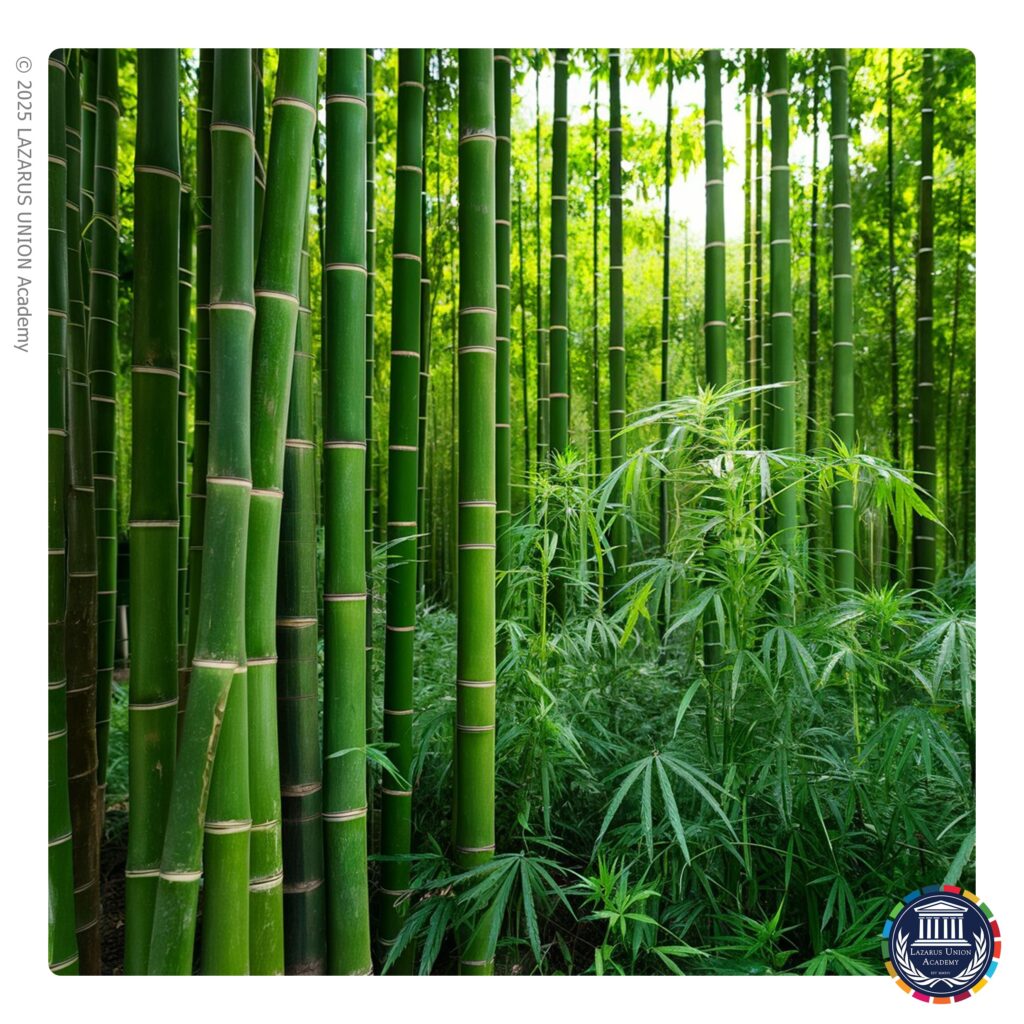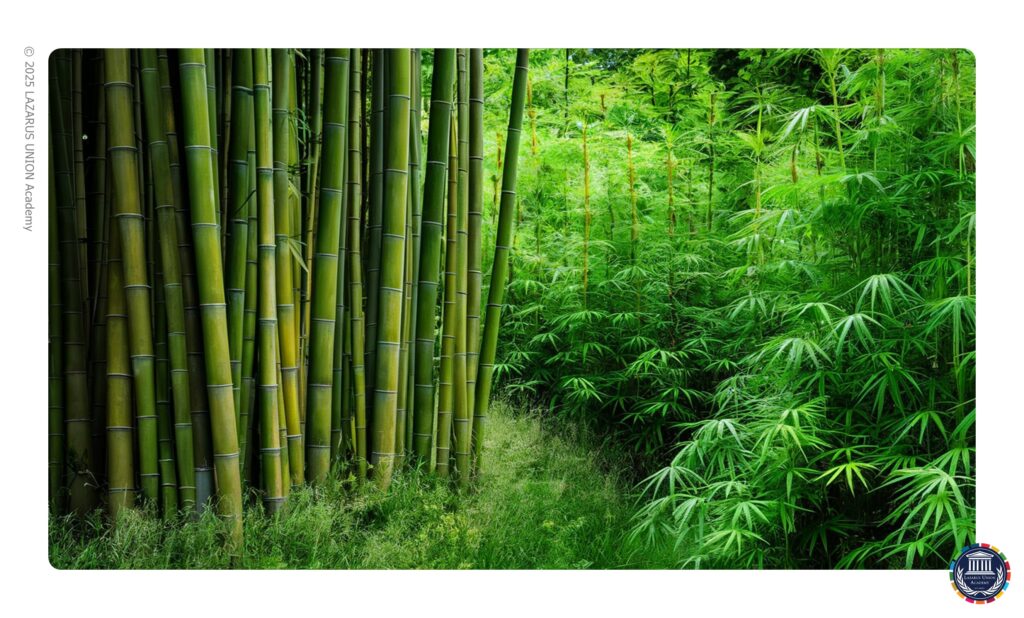
Green giants: Bamboo & Hemp – the super plants of sustainability
In a world that is increasingly looking for ecological solutions, two ancient plants are becoming the focus of modern innovation: bamboo and hemp. What characterises them is not only their amazing versatility, but also their impressive environmental footprint. From buildings to textiles to fuels, these green giants could be the materials of tomorrow. Let’s take a closer look at their capabilities and potential applications.
Bamboo: The turbo waxer with the power of steel
Fast as lightning – growing in the fast lane
Bamboo is a true botanical wonder. The fastest species can grow up to 91 cm per day – that’s almost a metre within 24 hours! This makes bamboo one of the fastest growing plants in the world.
By comparison, an average tree such as an oak takes over 50 years to reach harvest maturity. Bamboo, on the other hand, is ready for harvest in 3 to 5 years – without having to be replanted, as it grows back from the same root system.
Stronger than steel? Yes, really!
An often quoted, almost unbelievable fact: certain types of bamboo have a tensile strength of up to 28,000 PSI (pounds per square inch) – which is higher than some types of steel. This property makes it an extremely resilient material in the construction industry.
A practical example:
In parts of Asia, entire bridges are built from bamboo that can easily carry cars. Earthquake-resistant houses in Nepal and Indonesia also use bamboo as a load-bearing element – light, flexible and super-strong.
From architecture to everyday life: bamboo in use
- Houses: Modern architects are increasingly focussing on bamboo as a sustainable alternative to concrete or steel. It can be bent, glued and processed into panels.
- Furniture: From designer chairs to kitchen tables – bamboo not only looks elegant, it is also durable and robust.
- Clothing: Bamboo fibres can be processed into soft, breathable fabric that is antibacterial and odour-inhibiting. Ideal for underwear or sportswear.

Hemp: The forgotten all-rounder returns
More than just “green” – hemp as an industrial plant
Hemp has a somewhat disreputable image – wrongly so! Industrial hemp contains hardly any THC (the psychoactive element) and is above all one thing: incredibly versatile.
From paper for the American constitution to ropes for ships and bricks for houses – hemp has been a reliable raw material for centuries.
Record holder in terms of fibre production
Did you know that hemp produces four times as many fibres as cotton on the same surface area? It also requires 80 % less water and no pesticides – a real ecological advantage.
Exemplary applications:
- Textiles: Hemp fibres are tear-resistant, breathable and antibacterial. They are used for jeans, shoes and even bags. Hemp is also becoming increasingly popular for outdoor clothing.
- Bioplastics & composites: Car companies such as BMW and Mercedes use hemp fibres as a lightweight construction material in door panels.
- Construction industry: Climate-friendly, breathable walls can be built with “hempcrete” – CO₂-binding and mould-resistant.
- Biofuel: Biodiesel can be produced from hemp seed oil. Although hemp is not yet widely used, it has enormous potential for the future.
Bamboo & hemp in comparison – the super plants in a duel
| Criterion | Bamboo | Hemp |
| Growth | Up to 91 cm/day | 3-4 months until harvest |
| Fibre production | High (but less than hemp) | 4x more fibres than cotton |
| Areas of application | Construction, furniture, clothing, paper | Textiles, building materials, fuel, plastics |
| Sostenibilidad | No fertilisers, binds CO₂ | No pesticides, CO₂-negative |
| Special features | Tensile stronger than steel, very flexible | Extremely versatile, biodegradable |
Vision of the future: living with super plants
Imagine a house built on a foundation of hempcrete, with bamboo walls and furniture. The clothes you wear are made of breathable bamboo fibre, your bag is made of hemp fabric. And your car? Partly built from hemp composites, fuelled by biodiesel made from hemp seed oil.
What sounds like a utopia is already a reality in parts – and could become the standard if we continue to focus on sustainable alternatives to conventional materials.
Conclusion: eco-warriors with a future
Bamboo and hemp impressively demonstrate that the solutions to many environmental problems are already growing – literally. With their wide range of applications, environmental friendliness and efficiency, they are not just green, they are ingeniously green.



